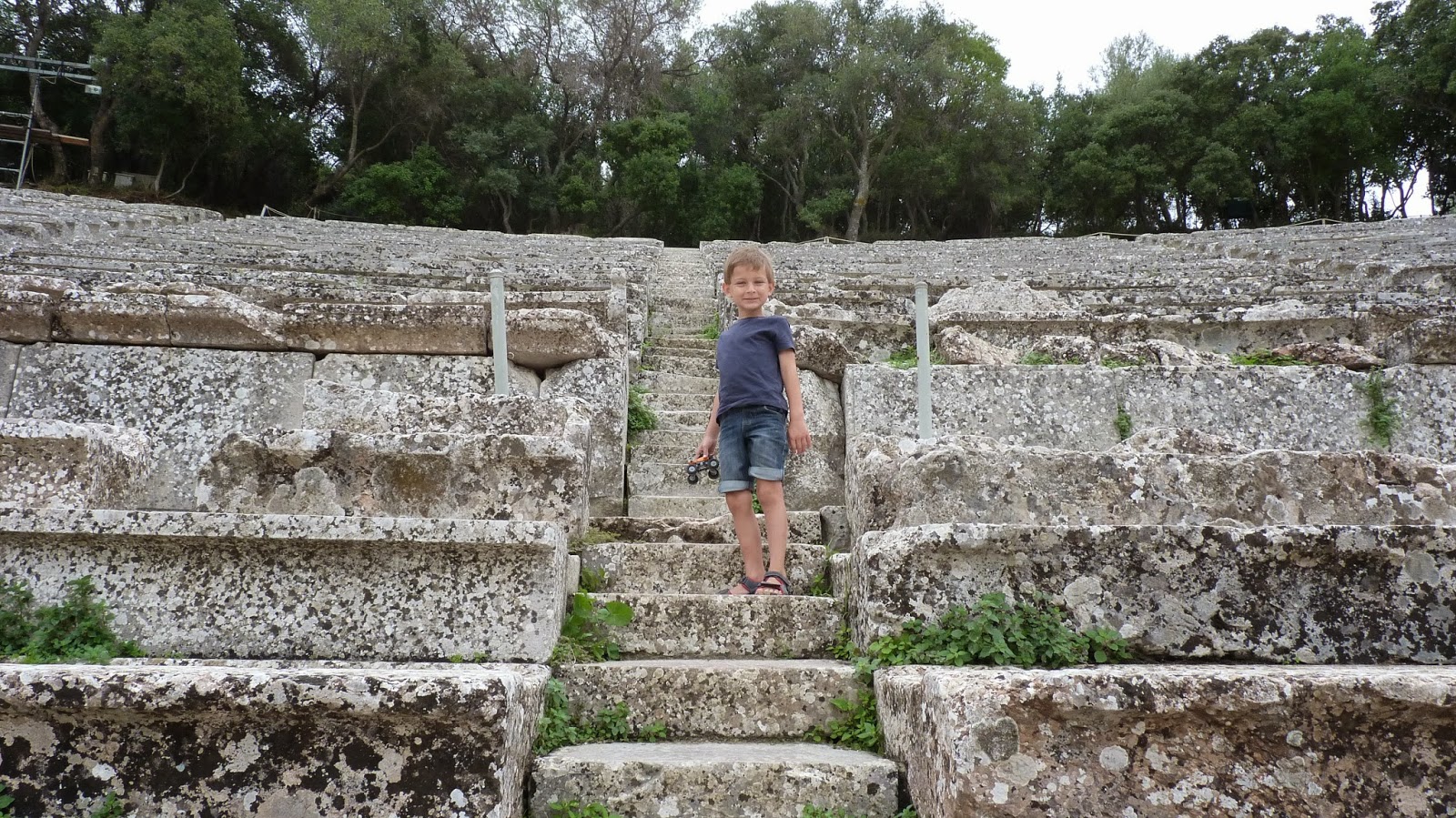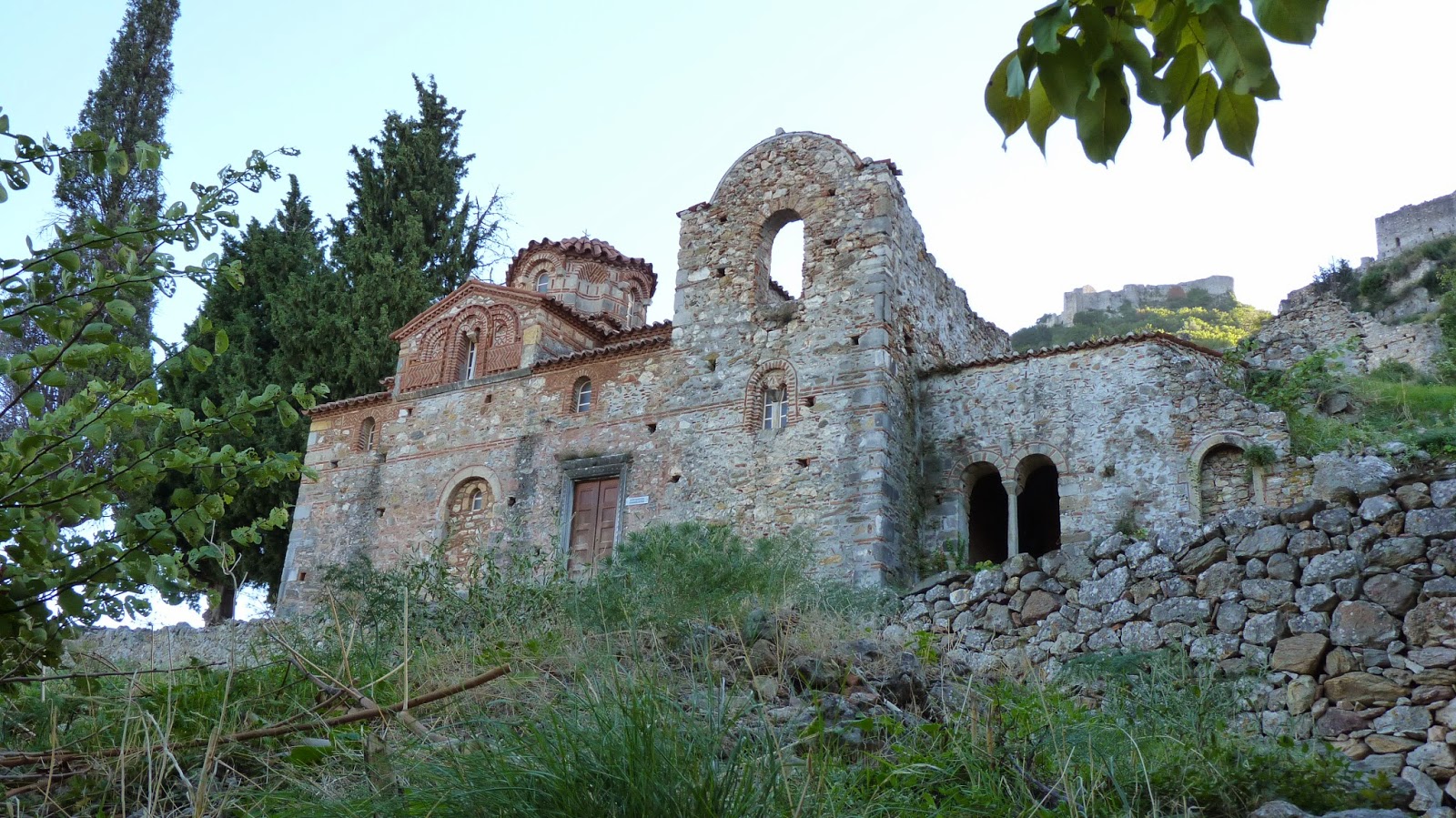Palea Epidhavros - a little town where our next campsite was located.



This time we had no trouble getting a spot just by the beach. It was lovely to listen to the sound of the sea when falling asleep and waking up. The previous campsite, Sikia, was full of olive groves, this one had plenty of fruit trees, tangerine/clementine and orange trees. It wasn't free of cats, though, which were fighting over food if we gave them some. There was no good sharing there!


Micky's first ever 'backpack' with daddy. The sea was unbelievably calm so we could all easily swim in it.
 From very calm to very rough: the last night at the campsite the sea got very rough, very loud with big waves slashing the beach. Just a couple of days earlier Aaron fell asleep on the beach after a swim. Beany tidied up all his toys and towels and was going to have a shower but then he changed his mind and went back to Aaron and stayed by his side watching him. As it turned out later he was concerned that if a big wave came, it would sweep daddy away. Seeing the big waves whipping the whole width of the little beach the last morning he reminded us that daddy would've definitely got swept away and he was absolutely right looking after Aaron.
From very calm to very rough: the last night at the campsite the sea got very rough, very loud with big waves slashing the beach. Just a couple of days earlier Aaron fell asleep on the beach after a swim. Beany tidied up all his toys and towels and was going to have a shower but then he changed his mind and went back to Aaron and stayed by his side watching him. As it turned out later he was concerned that if a big wave came, it would sweep daddy away. Seeing the big waves whipping the whole width of the little beach the last morning he reminded us that daddy would've definitely got swept away and he was absolutely right looking after Aaron.
The ancient theatre in Epidavros just 12 km away from our campsite. Absolutely amazing!
Little break before Mycanea
Mycenae

I found the story of the excavation of Mycenae quite fascinating. A German businessman believed that places from Homer's works where real and located exactly where Homer described. Following Homer's description he discovered Mycenae!
 The Lion Gate of Mycenae - the entrance to the city
The Lion Gate of Mycenae - the entrance to the city
The Lion Gate - the view from within the city walls
On the way to Mystras
Nearly in Mystras
Mystras, a fortified town built in XIII C. This town used to have a population of 20000! And there were some people (about thirty families) still living in the town until 1952 when excavations were resumed.
We loved it! It was very tiring walking around the town but definitely worth the effort. We even got to the citadel located at the very top of the hill!

Pandanassa Convent - church and nunnery, there are still some nuns living there, only a few. They have their own room where they sell their own handicrafts.
 A mansion, currently under restoration
A mansion, currently under restoration
Perivleptos Monastery, partially carved out of a rock


Pandanassa Convent


Catching a little breeze



Hodegetria
St. Theodoroi
Mitropolis - means cathedral. The part of Mystras with the oldest cathedral.
Evangelistria
A view from the town
Modern town of Mystras
By Polka


















































No comments:
Post a Comment